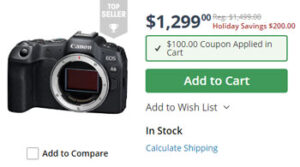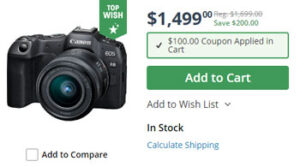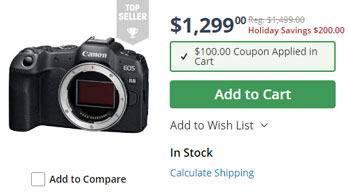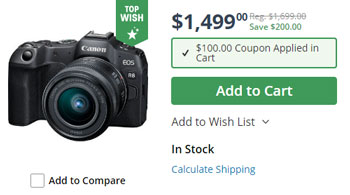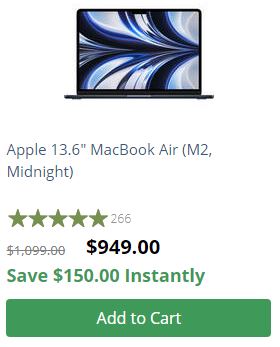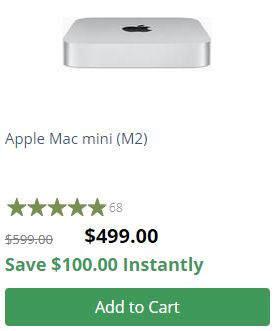Join More Than 50,000+ Subscribers and get latest camera news and rumors
NEW CAMERA VIDEOS ON YOUTUBE
|
By admin, on November 23rd, 2023
In the latest Canon Black Friday deals of 2023, we have a significant discount on the Canon R8 camera. Not only that, but there are also some amazing discounts on the Canon R6 Mark II camera. If you’re interested in the Canon R5, you’ll be surprised to know it’s available in the same price range as the Canon R6 Mark II. This is a super high-end professional camera available at the same price, which is literally impossible. So, if you’re planning to buy the R5 camera, this is the best time for you. Other than that, we also have an amazing discount on the Canon Netflix-approved professional body, the Canon R5C. Apart from all these big discounts, we also have amazing discount prices.
Canon R8 (Amazon.com) https://amzn.to/3sGGDDA (B&H Store) https://bhpho.to/3oWGYQp
If you’re planning to buy a Canon camera, now is the right time. You can get a substantial $200 discount on the Canon R8. Additionally, if you check out the B&H store and purchase the camera, they will send you an additional $100 coupon code. This means you can buy any product worth $100 for free at the B&H Store.
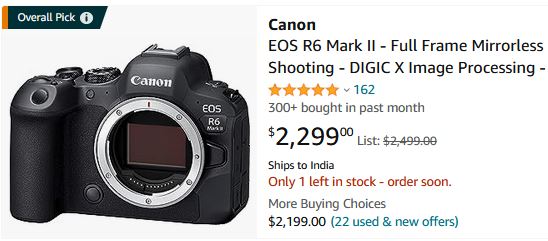
Canon R6II (Amazon.com) https://amzn.to/40LCg6D (B&H Store) https://bhpho.to/3QJ8F9q
The next camera on our list of best Canon Black Friday deals is the Canon R6 Mark II. The Canon R6 Mark II is an excellent camera for professional photographers, especially those interested in wedding photography, sports, fashion photography, or cinematography. This camera is a perfect photographic tool for you. The price of the camera right now is $2299, and you’re getting a direct $200 discount off its selling price. So, this is the best time to grab this camera. With the money you save, you can buy some photography accessories to go with the camera.
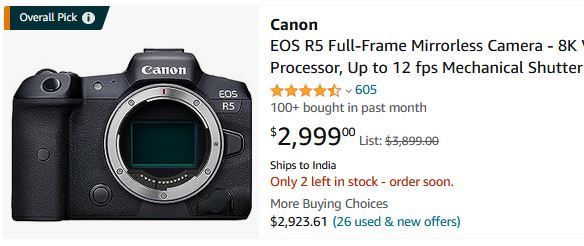
Canon R5 (Amazon.com) https://amzn.to/49IuU81 (B&H Store) https://bhpho.to/3sGTUMl
The next camera on our list is the Canon R5. Best Canon R5 Black Friday Deals are here, with a straightforward discount of $200 on the selling price of the camera at both the B&H store and Amazon.com. So, if you’re planning to buy the Canon R5 camera, this is the best time for you.
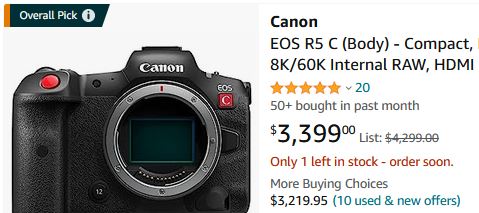
Canon R5C (Amazon.com) https://amzn.to/3umd5vo (B&H Store) https://bhpho.to/3sDXWFo
We currently have a massive discount on the Canon R5C camera body. The camera is available for $3399. The best thing about the Canon R5C camera is that it is a Netflix-approved cinema camera with a Canon RF Mount. The camera features the same high-quality sensor as the Canon EOS R5 and can capture up to 8K video without any overheating issues.
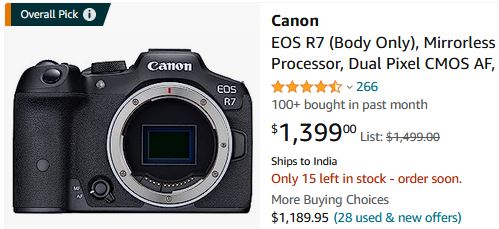
Canon R7 (Amazon.com) https://amzn.to/3G5Eww9 (B&H Store) https://bhpho.to/46n6mPh
Canon R7 is an excellent camera for sports and wildlife photography. If you love to have an amazing camera sports camera under Black Friday Deals 2023, this is the right time to buy it.
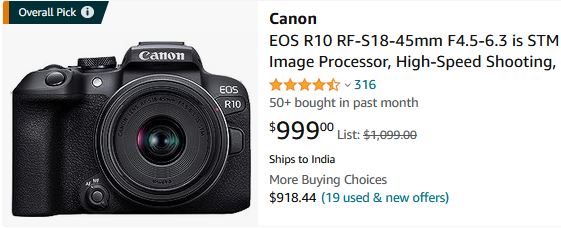
Canon R10 (Amazon.com) https://amzn.to/46q5Ks2 (B&H Store) https://bhpho.to/46ldWK3
By admin, on November 21st, 2023
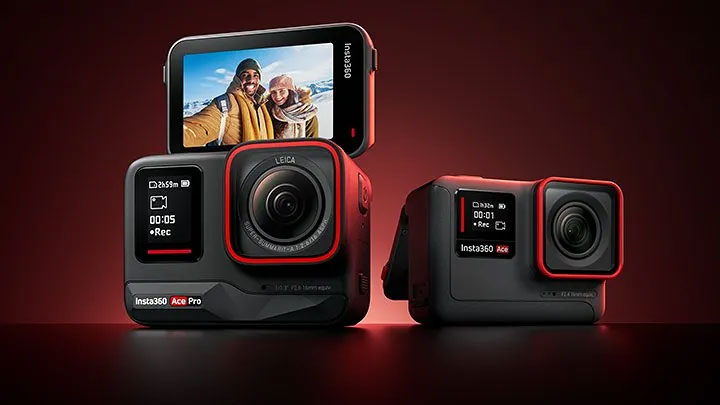
Get the INSTA 360 ACR PRO from AMAZON.COM | B&H Store
Let’s compare the Insta360 Ace Pro with the Insta360 Ace. The sensor size of both cameras differs. The Insta360 Ace Pro features a 1/1.3″ sensor, while the Insta360 Ace is limited to a smaller 1/2″ sensor. There’s also a difference in the lenses used. The Ace Pro uses a Leica-branded lens, whereas the Ace uses a general lens. Surprisingly, the aperture of the Leica lens on the Ace Pro is f/2.6, whereas the Ace, which uses a general lens, has an aperture of f/2.4.
| Feature |
Insta360 Ace PRO |
Insta360 Ace |
| Sensor Size |
1/1.3″ sensor |
1/2″ sensor |
| Lens |
Leica-branded lens |
General lens |
| Aperture |
f/2.6 |
f/2.4 |
Let’s compare the video resolution of the Insta360 Ace Pro and the Insta360 Ace.
The Insta360 Ace Pro offers a maximum video resolution of 8K at 24 frames per second (fps), and it can record 4K videos up to 120 fps. It also features a PureVideo mode, which allows you to record videos up to 4K at 30 fps. This mode captures excellent low-light video with the help of a dedicated AI chip.
| Feature |
Insta360 Ace Pro |
Insta360 Ace |
| Maximum Video Resolution |
8K at 24 fps |
6K at 30 fps |
| 4K Video |
Up to 120 fps |
Up to 120 fps |
| PureVideo Mode |
Yes (4K at 30 fps) |
Yes |
| Photo Format |
JPEG and DNG raw files |
JPEG and DNG raw files |
| Log Profile |
Not available |
Not available |
Both cameras have an excellent video capabilities, but the Ace Pro stands out with its larger sensor, better lens and advance AI features . However, both cameras lack a log profile for video recording.
On the other hand, the Insta360 Ace is limited to 6K video recording at up to 30 fps, and 4K can be boosted to 120 fps. It also has a PureVideo mode. For still images, both cameras offer the same resolution, despite the difference in sensor size. The video format is limited to MP4, but for photos, you can have JPEGs from both cameras as well as DNG raw files, which can be exported to the app or studio. There is no log profile available in both cameras while you are recording videos with either the Ace Pro or the Ace.
| Feature |
Insta360 Ace Pro |
Insta360 Ace |
| Maximum Video Bitrate |
170 Mbps |
170 Mbps |
| Exposure Value |
+/- 4 EV |
+/- 4 EV |
| ISO Range |
100 to 6400 |
100 to 6400 |
| Shutter Speed (Photography Mode) |
1/8000s to 120s |
1/8000s to 120s |
| Shutter Speed (Video Mode) |
1/8000s |
1/8000s |
| White Balance |
2000 to 10000 Kelvin |
2000 to 10000 Kelvin |
| Audio Modes |
Noise reduction, Stereo, Directional focus |
Noise reduction, Stereo, Directional focus |
| Weight |
179.8 grams |
176.8 grams |
| Dimensions |
71.9mmx52.15mmx38.5mm |
71.9mmx52.15mmx38.5mm |
| Storage |
Supports microSD cards up to 1TB |
Supports microSD cards up to 1TB |
The maximum video bitrate of both the Insta360 Ace Pro and the Insta360 Ace is the same at 170 Mbps. The exposure value is also identical at +/- 4 EV. In terms of ISO range, both cameras offer a range from 100 to 6400. Despite this limited ISO range, the PureVideo feature in both cameras captures excellent low-light videos. The shutter speed ranges from 1/8000 of a second to a maximum of 120 seconds in photography mode. In video mode, it’s 1/8000 of a second and depends on the frames per second required by the AI processor or limited by the user.
The white balance ranges from 2000 to 10000 Kelvin. In terms of audio, both cameras offer noise reduction mode and stereo and directional focus modes. The weight of both cameras is almost the same, with the Ace Pro weighing 179.8 grams and the Ace weighing 176.8 grams. The dimensions of both are the same. Neither camera has built-in storage, but they support microSD cards up to one terabyte.
| Feature |
Insta360 Ace Pro |
Insta360 Ace |
| Battery Capacity |
1650 mAh |
1700 mAh |
| Runtime |
100 minutes at 25°C |
100 minutes at 25°C |
| Charging Time (Fast Charging) |
46 minutes (with 30W adapter) |
Does not support fast-charging |
| Charging Time (Regular Charging) |
63 minutes (with 5V/3A charger) |
Approximately 70 minutes |
Now, let’s talk about the battery capacity, charging time, and runtime of both cameras. The Insta360 Ace Pro has a battery capacity of 1650 mAh, whereas the Insta360 Ace features a slightly larger battery capacity of 1700 mAh. However, this isn’t reflected in the runtime, as both cameras have a runtime of 100 minutes at 25 degrees Celsius while recording.
The Insta360 Ace Pro supports fast charging with a 30-watt adapter, taking 46 minutes to charge. With a regular 5-volt and 3-ampere charger, the charging time for the Insta360 Ace Pro is 63 minutes. On the other hand, the Insta360 Ace doesn’t support fast charging, and with a regular charger, it takes approximately 70 minutes to charge.
By admin, on November 21st, 2023

The recently announced action camera, the Insta 360 ACE Pro, features a dedicated artificial intelligence chip inside. This chip significantly enhances the camera’s low-light performance, making it one of the best in the competition right now, especially when compared to the Hero 12.
The camera also includes numerous internal AI modes, such as an automatic clip selection mode powered by artificial intelligence technology. These new features greatly enhance the overall performance and aspects of the camera.
Insta ACRPRO Action Camera Features
- Capture up to 8K24 Action Footage
- 1/1.3″ 48MP Sensor, Active HDR Capture
- 151° Wide-Angle Leica f/2.6 Lens
- FlowState Stabilization, Horizon Lock
- Voice & Gesture Control, 32′ Waterproof
- 4″ Flip Touchscreen, 0.7″ Front Screen
- 90-Minute Runtime, Fast Charging
- 2x Video & 2.5x Photo Digital Zoom
- Directional/Stereo Audio, Wind Reduction
- Multiple Selectable Video Modes
- Clarity Zoom: Zoom in and out 2x without loss of quality.
- Gesture Control: Start/stop recording or take a photo using hand signals, ideal for group selfies or noisy environments.
- Cancel Recording: Instantly cancel a recording to redo a trick, saving space on the SD card.
- Pause/Resume Recording: Pause and resume recording to create one continuous file for easier management and editing.
- Photo Grab: Capture a high-resolution photo while filming a video.
Externally, the camera boasts a 180-degree tilting display screen, a feature not seen in any action camera before. This large display is particularly useful when creating content. Additionally, the touch screen is fully responsive.
Overall, when looking at the footage compared to the Hero 12 and DCI Action 4 camera, the Insta 360 Pro truly stands out.
Get the INSTA 360 ACR PRO from AMAZON.COM | B&H Store
Insta360 Ace and Ace Pro are available globally for order from Tuesday, November 21st, 2023, via Insta360.com, Amazon, and select retailers. Insta360 Ace is priced at US$379.99, while the flagship Insta360 Ace Pro is priced at US$449.99.
By admin, on November 21st, 2023
Check out the latest ongoing deal on the Canon R8 camera. Right now, you can get a discount of approximately $300 on the Canon R8 camera. Here’s how you can avail the discount:
- You will get a direct discount of $200 when you add this camera to your cart.
- Once you proceed to checkout, a coupon worth $100 will be given to you. You can use this money to buy additional items like lights, camera filters, or whatever you like.
What to do with $100 Coupon ? Get VideoPRO Light @ 89 ONLY
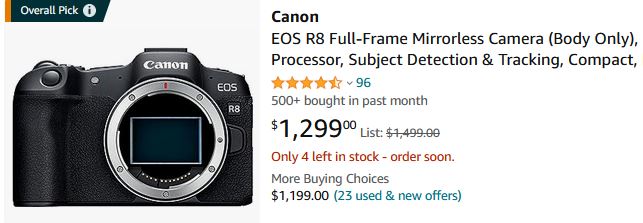
The Canon R8 is also available on Amazon.com with a $200 discount on the price. Unlike B&H store, we are not receiving a $100 coupon from Amazon. So, while we don’t have the additional coupon, we are still getting a $200 discount from Amazon overall.
Get Video Lights Under $100
By admin, on November 21st, 2023
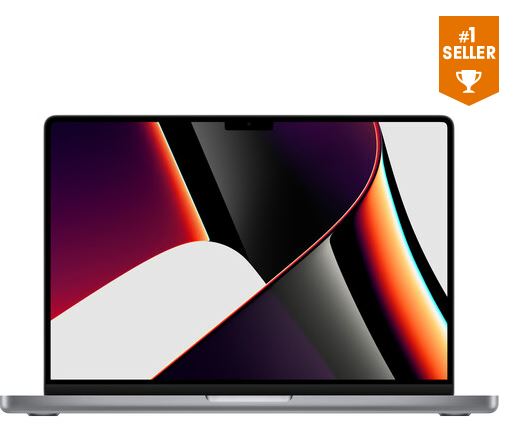
Get Macbook PRO with M1 MAX XHIP $1600 OFF – B&H STORE
Latest deal going on: Apple 14.2 inch MacBook Pro with M1 Max chipset in Space Grey is currently available at the B&H store. They are offering a discount of $1600 on this MacBook Pro, so grab it as soon as possible.
The Apple M1 Max 10-core chip, paired with 64GB of unified RAM and a two-terabyte solid-state drive for storage, is packed into a 14.2-inch Liquid Retina SDR screen. Not only that, you also get a 32-core graphics processing unit with a 16-core neural engine. This MacBook is an excellent tool if you want to edit high-end videos or images with it
Other Apple Ongoing Black Friday 2023 Deals
By admin, on November 21st, 2023
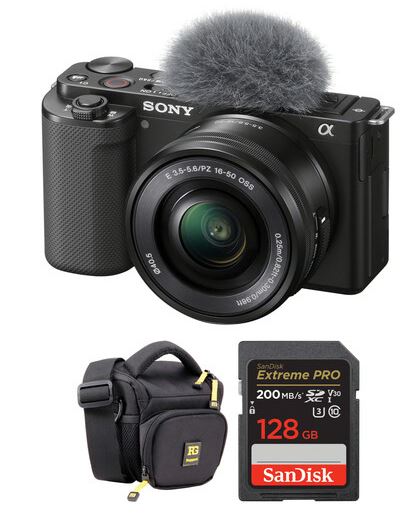
Check out the ZV-E10 Deals at B&H Here
Sony ZV-E10 Black Friday Deals at B&H Store| Grab the Sony ZV-E10 camera as there’s a special discount going on at the store. The store has not only given a $130 discount on the price of the camera, but they are also giving a 128 GB SanDisk card along with a free camera bag.

Get this DEAL at AMAZON.com
Sony ZV-E10 Black Friday Deals – at Amazon | Now, we have one more interesting deal for the Sony ZV-E10 camera for you at the official Sony Store and Amazon.com. Sony is offering you a 64GB memory card along with the camera bag, as well as a 4-set of essential filters for your camera completely free. So, this particular deal looks more promising and attractive to me compared to the previous one.
By admin, on November 18th, 2023

Check out the latest Black Friday 2023 deals going on at Amazon and B&H stores. We have listed some of the latest deals from Canon, Nikon, and Sony, as well as Fuji cameras. All the models are in limited stock listed here and have deals going on over them, so check it as soon as possible.
1. Sony Cameras Black Friday Sales 2023 | Deals Active on Sony Models
ZV-E10 (Amazon.com) https://amzn.to/3MOiNg0 (B&H Store) https://bhpho.to/3MTtFZZ
FX30 (Amazon.com) https://amzn.to/3R4cRBT (B&H Store) https://bhpho.to/47vNYEY
A6400 (Amazon.com) https://amzn.to/3G5Uoig (B&H Store) https://bhpho.to/47iQw9D
ZV1 (Amazon.com) (B&H Store) https://bhpho.to/49KioF2
ZV1II (Amazon.com) https://amzn.to/3sIMRTp (B&H Store) https://bhpho.to/49KMicj
ZV1F (Amazon.com) https://amzn.to/3SQu6bh (B&H Store) https://bhpho.to/3G6X8Mi
A7IV (Amazon.com) https://amzn.to/40KbEDa (B&H Store) https://bhpho.to/3uonneE
A7III (Amazon.com) https://amzn.to/3G3orqM (B&H Store) https://bhpho.to/3G6msC7
A7C (Amazon.com) https://amzn.to/49GsI0O (B&H Store) https://bhpho.to/47GFACz
A7RV (Amazon.com) https://amzn.to/49Hz3Jl (B&H Store) https://bhpho.to/49Iuyyd
2. Canon Cameras Black Friday Sales 2023 | Deals Active on Canon Models
Canon R8 (Amazon.com) https://amzn.to/3sGGDDA (B&H Store) https://bhpho.to/3oWGYQp
Canon R6II (Amazon.com) https://amzn.to/40LCg6D (B&H Store) https://bhpho.to/3QJ8F9q
Canon R5 (Amazon.com) https://amzn.to/49IuU81 (B&H Store) https://bhpho.to/3sGTUMl
Canon R5C (Amazon.com) https://amzn.to/3umd5vo (B&H Store) https://bhpho.to/3sDXWFo
Canon R7 (Amazon.com) https://amzn.to/3G5Eww9 (B&H Store) https://bhpho.to/46n6mPh
Canon R10 (Amazon.com) https://amzn.to/46q5Ks2 (B&H Store) https://bhpho.to/46ldWK3
3. Nikon Cameras Black Friday Sales 2023 | Deals Active on Nikon Models
Nikon Z7II: (Amazon.com) https://amzn.to/3SKUCmi (B&H Store) https://bhpho.to/3sOCOfs
Nikon Z6II (Amazon.com) https://amzn.to/46kiqRg (B&H Store) https://bhpho.to/3SOMdyw
Nikon Z30 Amazon.com) https://amzn.to/46j8rM8 (B&H Store) https://bhpho.to/3G5FecN
4. Fuji Cameras Black Friday Sales 2023 | Deals Active on Fuji Models
Fuji XS-10 (Amazon.com) https://amzn.to/3sEx4F4 (B&H Store) https://bhpho.to/3G63SKo
Fuji XH2S: (Amazon.com) https://amzn.to/47kCELX (B&H Store) https://bhpho.to/3umcuKb
|
KEEP THIS BLOG ALIVE - Support New Camera Buy Canon Lenses, Buy Music CD or Digital Camera at amazon it helps this site, and you do not pay anything extra, it is just a way to help support this site.

|
